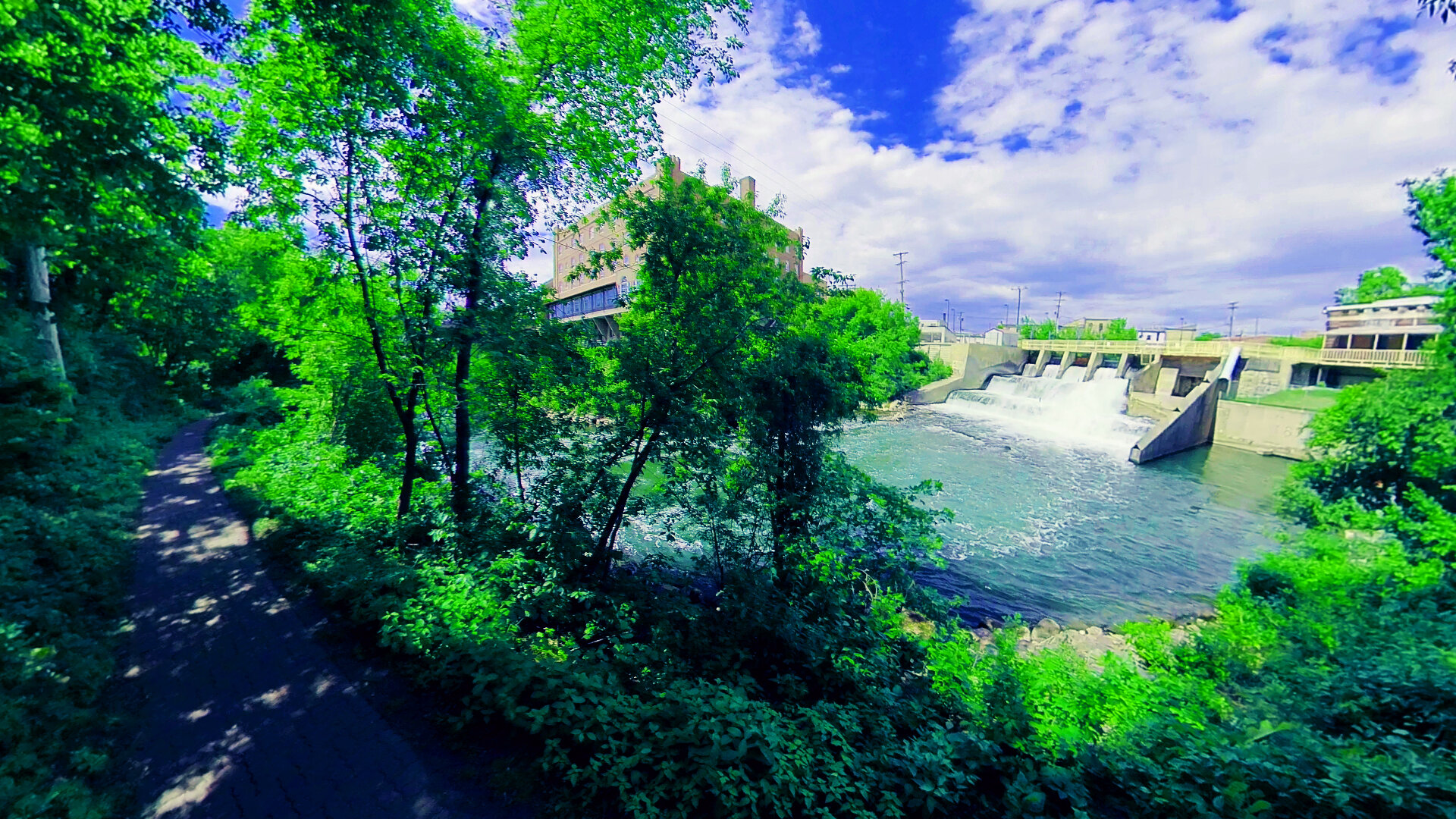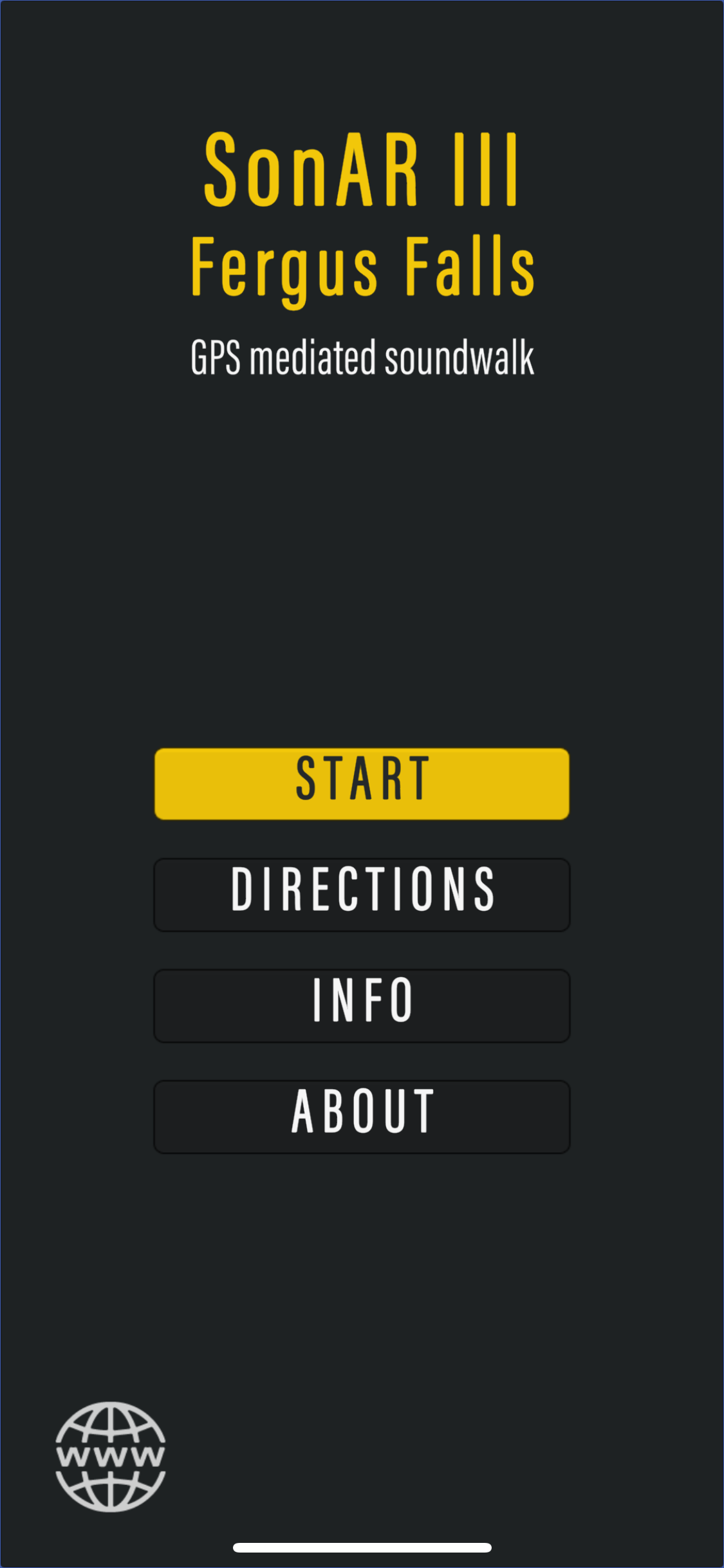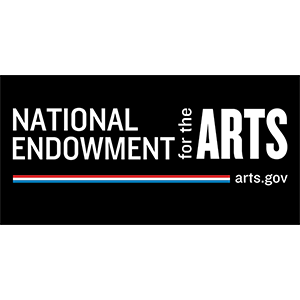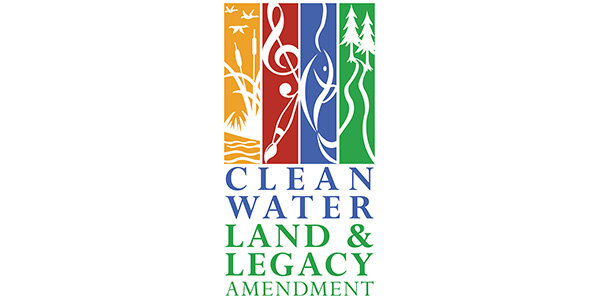
Sonic Augmented Reality (SonAR) III
Fergus Falls
An Immersive Audio Experience
SonAR (Sonic Augmented Reality) III is a “soundwalk” app offering users an immersive audio experience in Fergus Falls, Minnesota. Scott L. Miller composed new music using the environmental sounds of Fergus Falls as inspiration for the public to interactively experience while on a self-guided walk along the Otter Tail River and around Lake Alice. The SonAR III app will be available to the public on November 04 through the Apple App Store and Google Play.
Experience Fergus Falls with a new and unique perspective. Using GPS, follow a map on the app with a recommended path. With headphones in, you’ll hear Miller’s composition layered over the ambient sounds of the city while exploring the path. Your unique movement, Miller’s composition, and the sounds of the city combine to create a unique experience.
It takes about 90 minutes at a comfortable walking pace to travel the recommended path, but can be as long or as short as you desire. You’ll best experience the intended layering of sound when wearing earbuds or headphones that allow ambient sound to come through (not noise cancelling headphones).
Download SonAR III
Get the free app for Apple and Android. Available November 04.
Fergus Falls
Visit Fergus Falls, Minnesota to experience SonAR III.
“At the end of the soundwalk, the listener will have actively engaged with the town’s sonic ecology. Perhaps they’ll be newly aware of certain sounds or the reasons they exist. Perhaps they’ll simply question why Fergus Falls sounds the way it does, or why they feel the way they do about the sound.”
— Scott L. Miller
Artist Statement
I was a Hinge Artist in Residence in 2015, and have been looking for a project to bring me back to Fergus Falls, MN since then. Creating a GPS-mediated soundwalk was the perfect solution. In June 2021, I visited Fergus Falls, walking throughout town, along the river walk, at the Kirkbride, and around Lake Alice, taking notes on a map of dominant acoustic phenomena, and recording the walk. Later I reviewed my notes and listened back to the recordings to identify soundmarks (sonic landmarks) and keynotes (the general tone or “key” of a sonic environment). I analyzed the audio recordings for sonic features that suggested listening to the environment as music, that evoked or inspired in me musical contributions I could make that complement the sonic ecology, or that would draw our attention to sonic features through imitation, tuning, and contrast.
I spoke with Chris Shuelke, an historian with the Otter Tail County Historical Society. He recommended several possible walks, and we discussed the history of the area for meaningful associations I might be inspired by. One story involves the Cyclone of 1919, a significant tragedy in the community. There is a legend that a church bell was flung into Lake Alice, and that you can still hear the ringing of the bell. (I think the bell was from St. James Episcopal Church, but four churches were leveled by The Cyclone, so I am not certain.) Bells and water became the touchstone for my work.
The sound that forms the basis of the soundwalk comes from recordings of church bells, both real and synthesized. Ringing bells dominate the soundtrack as you walk around Lake Alice. As you move further from Lake Alice, what remains are the resonant tones of bells, the after effect of ringing a bell. And in a nod to the history of the river, at the end of the river walk (and from Wright Park) you can hear the ringing of a hand bell, such as you would encounter on a small steam boat.
There are some interesting phenomena you may encounter on the river walk. As you near the Otter Tail Power Company building, a tremendous amount of electromagnetic interference becomes audible over your headphones. And as you near the dam, the small building housing the turbine and related machinery generates a symphony of electronic sounds all on its own.
Part of what makes this app effective at connecting the listener with the sonic ecology is anticipation. Having downloaded the app and put on headphones, the listener is prepared to hear something, but not necessarily what. And so, the listener is paying close attention to sound, actively listening and toggling between different modes or levels of listening attention. Composer and acoustic ecologist Barry Truax identifies “listening-in-search”—which I imagine is happening when first using the app—as the listener is waiting to hear evidence of my work, or evidence that the app is working at all. “Listening-in-readiness” is the other level of attention I think is activated by using the SonAR app. As the sounds of my composition and of the local sonic ecology become familiar, attention can be focused elsewhere. If a change to what is heard occurs—a new sound, or noticing the absence of a sound—the ready listener becomes aware, and focuses on that change, perhaps the circumstances surrounding it. At the end of the soundwalk, the listener will have actively engaged with the sonic ecology, perhaps becoming newly aware of certain sounds or the reasons they exist, or even simply questioning why the locale sounds the way it does and why they feel the way they do about the sound.
—Scott L. Miller
Project credits
Scott L. Miller, composer, sound design. Created with software tools designed by Marty Fitzer, Joshua Blair, and Luigi Leuzzi.
Scott L. Miller is a fiscal year 2021 recipient of a Creative Support for Individuals grant from the Minnesota State Arts Board. This activity is made possible by the voters of Minnesota through a grant from the Minnesota State Arts Board, thanks to a legislative appropriation by the Minnesota State Legislature; and by a grant from the National Endowment for the Arts.
Watch a Preview of SonAR II
The technology used to create SonAR III:
Unity3D, a software platform for creating interactive, real-time games and apps
Symbolic Sound Kyma sound design workstation, with the Kyma Ambisonic Toolkit
Pro Tools Ultimate and Waves B360 and Ambisonic NX plugins









